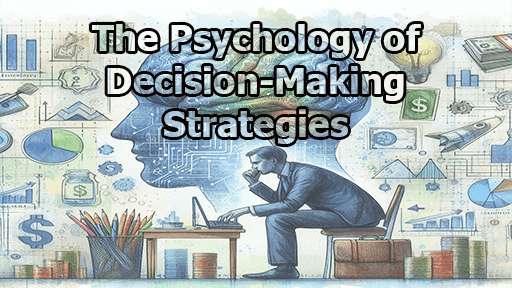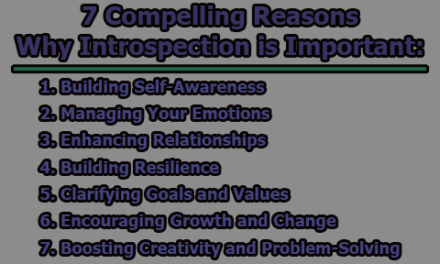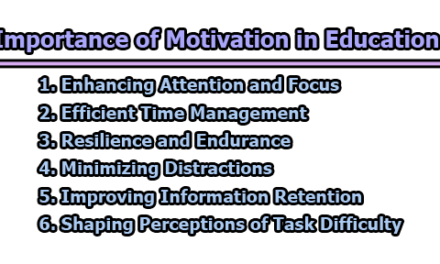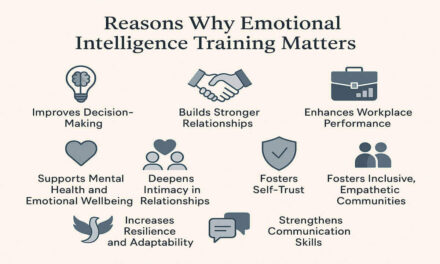The Psychology of Decision-Making Strategies:
Decision-making is a cognitive process involving the evaluation of options and the selection of a course of action (Simon, 1955). It integrates psychological, sociological, and neurological perspectives, making it a multidisciplinary field of study. Recent advancements in cognitive psychology and neuroscience have shed light on how individuals process information and make choices under varying circumstances. In the rest of this article, we are going to explore the psychology of decision-making strategies based on scientific research.
Cognitive Theories of Decision-Making:
One of the foundational models in decision-making psychology is the Rational Choice Theory, which posits that individuals make decisions by maximizing utility based on available information (Von Neumann & Morgenstern, 1944). However, research has shown that human decision-making often deviates from this idealized model due to cognitive limitations and biases (Kahneman & Tversky, 1979).
Dual-Process Theory:
The Dual-Process Theory categorizes decision-making into two distinct systems:
System 1: Fast, automatic, and intuitive.
System 2: Slow, deliberate, and analytical (Evans, 2008).
Studies indicate that System 1 is more susceptible to heuristics and biases, while System 2 engages in critical analysis, reducing errors (Kahneman, 2011). For instance, when faced with time constraints, individuals often rely on System 1, leading to suboptimal choices (Evans & Stanovich, 2013). Experimental research using cognitive tasks like the Stroop Test demonstrates the ease with which System 1 dominates unless deliberate effort is made to activate System 2.
Prospect Theory:
Prospect Theory, developed by Kahneman and Tversky (1979), challenges the Rational Choice Theory by demonstrating how individuals evaluate potential gains and losses asymmetrically. The theory introduces the concept of loss aversion, where losses are perceived as more significant than equivalent gains. Experimental studies have validated this phenomenon, highlighting its implications for financial and health-related decisions (Thaler, 1980). For example, in hypothetical investment scenarios, participants consistently showed a tendency to avoid loss despite potentially high gains, confirming the predictive power of the theory in risk-averse behaviors.
Neurobiological Underpinnings:
Advances in neuroscience have provided insights into the brain regions involved in decision-making. The prefrontal cortex, amygdala, and striatum play pivotal roles in evaluating risks, rewards, and emotions (Bechara et al., 2000). Functional magnetic resonance imaging (fMRI) studies reveal that the dorsolateral prefrontal cortex (DLPFC) is active during complex decision-making tasks, supporting the role of System 2 processing (Kable & Glimcher, 2007).
Additionally, neurochemical factors such as dopamine influence reward-based decision-making. Research by Schultz (1998) demonstrates that dopamine release in the striatum reinforces choices associated with positive outcomes, shaping future behavior. Studies using pharmacological manipulation of dopamine levels have further shown its impact on impulsivity and long-term planning, underscoring its critical role in adaptive decision-making.
Emotional and Social Influences:
Emotion significantly impacts decision-making, often overriding rational analysis. For instance, the Somatic Marker Hypothesis suggests that emotional signals guide decision-making by highlighting potential risks and benefits (Damasio, 1996). Experimental evidence shows that individuals with impaired emotional processing, such as patients with damage to the ventromedial prefrontal cortex, exhibit difficulties in making advantageous choices (Bechara et al., 1994). These findings are supported by gambling task studies, where emotionally driven cues often guide risk-averse behaviors.
Social factors also play a crucial role in decision-making. Conformity studies by Asch (1956) demonstrate how group dynamics influence individual choices, while research on social identity theory highlights the impact of group membership on decision preferences (Tajfel & Turner, 1986). For example, studies on workplace decision-making reveal that individuals are more likely to conform to group opinions, especially under hierarchical pressures, indicating the profound effect of social norms.
Heuristics and Biases:
Heuristics are mental shortcuts that simplify decision-making but often lead to systematic errors. Kahneman and Tversky (1974) identified several common heuristics, including:
- Availability Heuristic: Decisions are influenced by the ease of recalling similar instances.
- Representativeness Heuristic: Judgments are based on the similarity of an event to a prototype.
- Anchoring Effect: Initial information serves as a reference point for subsequent decisions.
These biases have been extensively studied in contexts such as medical diagnosis, financial markets, and judicial decision-making (Gigerenzer & Goldstein, 1996). For instance, anchoring bias is evident in price negotiations, where the first proposed price heavily influences the final agreement. Similarly, the availability heuristic is frequently observed in public health campaigns, where vivid examples disproportionately shape risk perceptions.
Strategies to Enhance Decision-Making:
Research has proposed several strategies to improve decision-making by reducing biases and enhancing analytical thinking. These include:
- Pre-mortem Analysis: This strategy involves imagining that a decision has failed and identifying potential causes for the failure. This approach increases awareness of risks and improves planning (Klein, 2007). For example, organizations often use pre-mortem analysis in project management to anticipate challenges and refine strategies before implementation.
- Decision Trees and Structured Frameworks: Visual tools like decision trees help map out possible outcomes and their probabilities. Structured frameworks clarify objectives and evaluate trade-offs systematically, leading to more informed choices (Hammond et al., 1999).
- Mindfulness Training: Developing present-moment awareness through mindfulness practices can reduce emotional reactivity and impulsive decisions. Studies show that mindfulness training enhances focus and self-regulation, making it particularly useful in high-stress situations (Brown & Ryan, 2003).
- Group Decision-Making: Leveraging diverse perspectives in group settings can counteract individual biases. However, this requires strategies to prevent groupthink, such as encouraging dissenting opinions and ensuring an inclusive decision-making environment (Janis, 1982).
- Simulation and Scenario Planning: Testing decisions in hypothetical environments allows individuals and organizations to anticipate challenges and evaluate potential outcomes. For instance, scenario planning is widely used in business and public policy to prepare for future uncertainties (Schoemaker, 1995).
- Critical Thinking Education: Incorporating problem-solving exercises and critical thinking modules into educational curricula fosters analytical and evaluative skills. Longitudinal studies show that such training improves decision-making in professional and personal contexts (Halpern, 1998).
- Feedback Loops: Establishing systems to review past decisions enables individuals and organizations to learn from successes and failures. This iterative process improves future decision-making by highlighting effective strategies and avoiding repeated mistakes (Argyris & Schön, 1978).
- Decision-Making Aids: Technological tools, such as algorithms and artificial intelligence, can support complex decisions by providing data-driven insights. For example, AI systems in healthcare assist clinicians in diagnosing conditions and selecting treatments, enhancing both speed and accuracy (Brynjolfsson & McAfee, 2014).
- Emotional Regulation Techniques: Developing skills to manage emotions, such as practicing relaxation techniques or reframing negative thoughts, helps reduce impulsivity and improve decision quality. Research suggests that individuals who effectively regulate their emotions are better equipped to make thoughtful, long-term decisions (Damasio, 1996).
- Time Management and Deadlines: Allocating sufficient time for decision-making allows for thorough analysis and reduces reliance on heuristic shortcuts. Studies indicate that time pressure often leads to suboptimal choices, emphasizing the importance of deliberate pacing in critical decisions (Evans, 2008).
Decision-Making in Uncertainty:
Uncertainty poses significant challenges to decision-making. Research on ambiguity aversion shows that individuals prefer known risks over unknown probabilities (Ellsberg, 1961). Behavioral experiments, such as the Ellsberg paradox, consistently demonstrate this preference, even when logical reasoning suggests otherwise. In contrast, the concept of satisficing, introduced by Simon (1956), suggests that individuals settle for “good enough” options rather than optimal solutions when faced with limited information. This approach has been validated in studies involving consumer behavior, where time constraints and information overload often lead to satisficing strategies.
Practical Applications:
The principles of decision-making psychology extend to a multitude of real-world applications, where understanding human behavior and cognitive mechanisms can significantly enhance outcomes. Here, we delve into practical domains where decision-making strategies play a crucial role, offering specific examples and actionable insights.
i. Healthcare Decision-Making: Shared decision-making (SDM) has emerged as a transformative model in healthcare, fostering collaboration between patients and healthcare providers (Elwyn et al., 2012). By combining clinical expertise with patient preferences, SDM enhances patient autonomy and adherence to treatment plans. For instance:
- Applications: Decision aids such as risk calculators and informational brochures help patients understand their options. For example, in cancer treatment, tools like Adjuvant! Online guide patients through complex choices involving chemotherapy, surgery, or palliative care.
- Challenges: Emotional stress and cognitive overload often impair patient decisions. Training healthcare providers in communication strategies, such as the use of empathetic language, has been shown to mitigate these effects (Epstein & Street, 2011).
ii. Education and Training: Educational systems have increasingly emphasized critical thinking and decision-making skills. Research shows that fostering these abilities leads to improved academic and life outcomes (Halpern, 1998).
- Practical Approaches:
- Introducing scenario-based learning and simulations in classrooms encourages students to engage with real-world problems. For instance, medical schools use patient simulators to train students in diagnostic and ethical decision-making.
- Using reflective journaling helps learners analyze their decisions retrospectively, fostering metacognition and learning from mistakes.
- Evidence: Studies reveal that students exposed to critical thinking curricula demonstrate better performance in ambiguous and high-stakes tasks, such as standardized tests or complex team projects (Arum & Roksa, 2011).
iii. Business and Management: Organizations continually face decision-making challenges, from resource allocation to strategic planning. Behavioral insights have revolutionized managerial decision-making, particularly in addressing biases like overconfidence or anchoring (Bazerman & Moore, 2012).
- Data-Driven Decision-Making: The integration of big data analytics and AI tools has streamlined business decisions. For example, predictive algorithms in supply chain management optimize inventory levels, reducing waste and costs.
- Behavioral Interventions: Nudging techniques, such as setting default options in employee retirement plans, have significantly improved outcomes like savings rates. A famous example is the implementation of automatic enrollment in 401(k) plans in the United States, which led to a 40% increase in participation rates (Madrian & Shea, 2001).
- Leadership Training: Workshops focusing on ethical decision-making and crisis management equip leaders to handle uncertainties effectively. Programs incorporating pre-mortem analysis help anticipate risks, boosting project success rates.
iv. Public Policy and Governance: In public policy, decision-making strategies influence the design and implementation of interventions that affect millions of lives. Behavioral economics has introduced innovative tools to nudge citizens toward better choices without coercion (Thaler & Sunstein, 2008).
- Case Studies:
-
- Anti-smoking campaigns that emphasize graphic warnings on cigarette packs exploit the availability heuristic to discourage smoking.
- Tax compliance initiatives using social proof—e.g., “90% of citizens in your area pay their taxes on time”—have significantly increased adherence rates.
- Policy Planning Tools: Scenario analysis and participatory decision-making engage stakeholders in envisioning potential outcomes, ensuring robust and inclusive policy frameworks.
v. Technology and Consumer Behavior: Digital platforms have transformed consumer decision-making, often leveraging psychological insights to shape user behavior.
- Personalization Algorithms: Platforms like Netflix and Amazon use algorithms that recommend products based on past behavior, simplifying choices in information-rich environments.
- Ethical Concerns: Dark patterns—design tactics that exploit cognitive biases to manipulate decisions—highlight the need for ethical considerations. Regulatory bodies are increasingly focusing on creating standards to protect consumer autonomy.
- Gamification: Applications in fitness (e.g., Fitbit) or education (e.g., Duolingo) use gamified elements such as rewards and progress bars to motivate user engagement.
vii. Legal and Judicial Systems: In legal settings, understanding decision-making can improve judgments and policy outcomes.
- Judicial Training: Programs designed to mitigate biases, such as the anchoring effect, improve the quality of legal decisions. For instance, educating judges about implicit biases in sentencing has been shown to reduce disparities.
- Alternative Dispute Resolution (ADR): Techniques like mediation rely on structured decision-making frameworks, helping conflicting parties reach mutually acceptable solutions. Research shows that ADR methods often yield better satisfaction and compliance rates compared to traditional litigation (Bush & Folger, 1994).
vii. Environmental Sustainability: Promoting sustainable behaviors requires strategies that align individual choices with environmental goals.
- Behavioral Interventions: Nudges like feedback on energy consumption (“Your usage is lower than your neighbors’”) have proven effective in reducing household energy use (Allcott, 2011).
- Community Engagement: Participatory approaches that involve stakeholders in environmental decision-making foster trust and long-term commitment to conservation goals.
viii. Military and Crisis Management: In high-stakes environments like military operations or disaster response, effective decision-making is critical.
- Applications: Simulations and war-gaming scenarios prepare personnel for real-world challenges by simulating uncertain and rapidly changing conditions.
- Technological Integration: Decision-support systems using AI assist commanders in resource allocation, risk assessment, and strategic planning.
Final thought, the psychology of decision-making is a multifaceted field that integrates cognitive, emotional, and social dimensions. By examining theoretical frameworks and empirical evidence, researchers continue to uncover the complexities of human choices. Future studies should explore the interplay between individual differences, cultural factors, and technological advancements in shaping decision-making processes. Advancing this understanding has the potential to improve decision-making outcomes across personal, professional, and societal contexts.
References:
- Argyris, C., & Schön, D. A. (1978). Organizational learning: A theory of action perspective. Addison-Wesley.
- Asch, S. E. (1956). Studies of independence and conformity: A minority of one against a unanimous majority. Psychological Monographs: General and Applied, 70(9), 1–70. https://doi.org/10.1037/h0093718
- Bazerman, M. H., & Moore, D. A. (2012). Judgment in managerial decision making (8th ed.). Wiley.
- Bechara, A., Damasio, H., & Damasio, A. R. (2000). Emotion, decision-making, and the orbitofrontal cortex. Cerebral Cortex, 10(3), 295–307. https://doi.org/10.1093/cercor/10.3.295
- Bechara, A., Tranel, D., & Damasio, H. (1994). Deficits in decision-making following damage to human prefrontal cortex. Cognition, 50(1–3), 7–15. https://doi.org/10.1016/0028-3932(82)90100-2
- Brown, K. W., & Ryan, R. M. (2003). The benefits of being present: Mindfulness and its role in psychological well-being. Journal of Personality and Social Psychology, 84(4), 822–848. https://doi.org/10.1037/0022-3514.84.4.822
- Brynjolfsson, E., & McAfee, A. (2014). The second machine age: Work, progress, and prosperity in a time of brilliant technologies. W. W. Norton & Company.
- Damasio, A. R. (1996). The somatic marker hypothesis and the possible functions of the prefrontal cortex. Philosophical Transactions of the Royal Society B: Biological Sciences, 351(1346), 1413–1420. https://doi.org/10.1098/rstb.1996.0125
- Ellsberg, D. (1961). Risk, ambiguity, and the Savage axioms. The Quarterly Journal of Economics, 75(4), 643–669. https://doi.org/10.2307/1884324
- Elwyn, G., Frosch, D., Thomson, R., et al. (2012). Shared decision-making: A model for clinical practice. Journal of General Internal Medicine, 27(10), 1361–1367. https://doi.org/10.1007/s11606-012-2077-6
- Evans, J. S. B. T. (2008). Dual-processing accounts of reasoning, judgment, and social cognition. Annual Review of Psychology, 59, 255–278. https://doi.org/10.1146/annurev.psych.59.103006.093629
- Evans, J. S. B. T., & Stanovich, K. E. (2013). Dual-process theories of higher cognition: Advancing the debate. Perspectives on Psychological Science, 8(3), 223–241. https://doi.org/10.1177/1745691612460685
- Gigerenzer, G., & Goldstein, D. G. (1996). Reasoning the fast and frugal way: Models of bounded rationality. Psychological Review, 103(4), 650–669. https://doi.org/10.1037/0033-295X.103.4.650
- Halpern, D. F. (1998). Teaching critical thinking for transfer across domains: Dispositions, skills, structure training, and metacognitive monitoring. American Psychologist, 53(4), 449–455. https://doi.org/10.1037/0003-066X.53.4.449
- Hammond, J. S., Keeney, R. L., & Raiffa, H. (1999). Smart choices: A practical guide to making better decisions. Harvard Business Review Press.
- Janis, I. L. (1982). Groupthink: Psychological studies of policy decisions and fiascoes (2nd ed.). Houghton Mifflin.
- Kable, J. W., & Glimcher, P. W. (2007). The neural correlates of subjective value during intertemporal choice. Nature Neuroscience, 10(12), 1625–1633. https://doi.org/10.1038/nn2007
- Kahneman, D. (2011). Thinking, fast and slow. Farrar, Straus, and Giroux.
- Kahneman, D., & Tversky, A. (1974). Judgment under uncertainty: Heuristics and biases. Science, 185(4157), 1124–1131. https://doi.org/10.1126/science.185.4157.1124
- Kahneman, D., & Tversky, A. (1979). Prospect theory: An analysis of decision under risk. Econometrica, 47(2), 263–291. https://doi.org/10.2307/1914185
- Klein, G. (2007). Performing a project premortem. Harvard Business Review, 85(9), 18–19. Retrieved from https://hbr.org/
- Schultz, W. (1998). Predictive reward signal of dopamine neurons. Journal of Neurophysiology, 80(1), 1–27. https://doi.org/10.1152/jn.1998.80.1.1
- Simon, H. A. (1955). A behavioral model of rational choice. The Quarterly Journal of Economics, 69(1), 99–118. https://doi.org/10.2307/1884852
- Simon, H. A. (1956). Rational choice and the structure of the environment. Psychological Review, 63(2), 129–138. https://doi.org/10.1037/h0042769
- Schoemaker, P. J. H. (1995). Scenario planning: A tool for strategic thinking. Sloan Management Review, 36(2), 25–40.
- Thaler, R. H. (1980). Toward a positive theory of consumer choice. Journal of Economic Behavior & Organization, 1(1), 39–60. https://doi.org/10.1016/0167-2681(80)90051-7
- Thaler, R. H., & Sunstein, C. R. (2008). Nudge: Improving decisions about health, wealth, and happiness. Yale University Press.
- Tajfel, H., & Turner, J. C. (1986). The social identity theory of intergroup behavior. In S. Worchel & W. G. Austin (Eds.), Psychology of intergroup relations (pp. 7–24). Nelson-Hall.
- Von Neumann, J., & Morgenstern, O. (1944). Theory of games and economic behavior. Princeton University Press.

Library Lecturer at Nurul Amin Degree College










